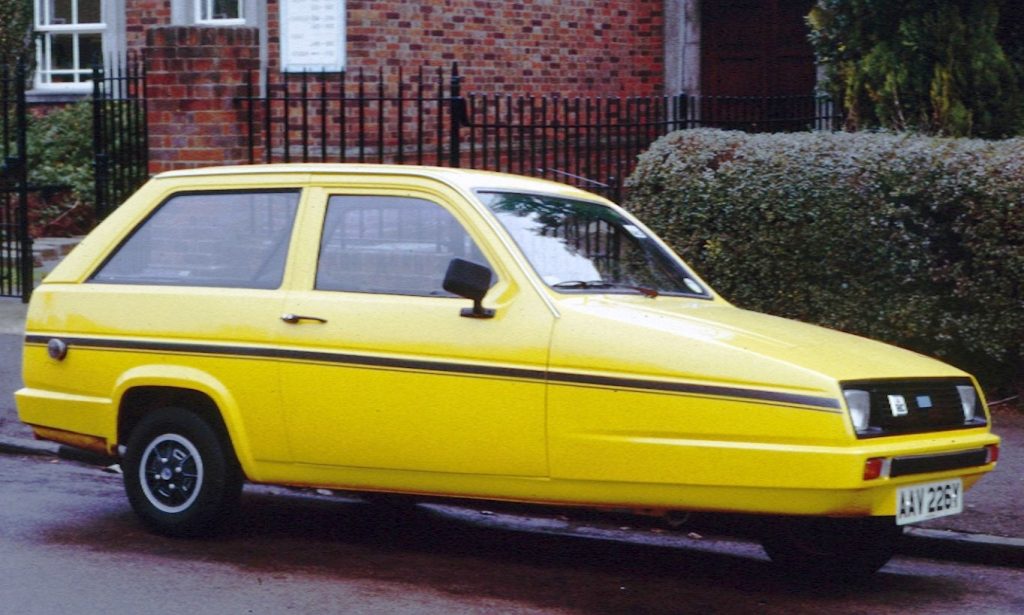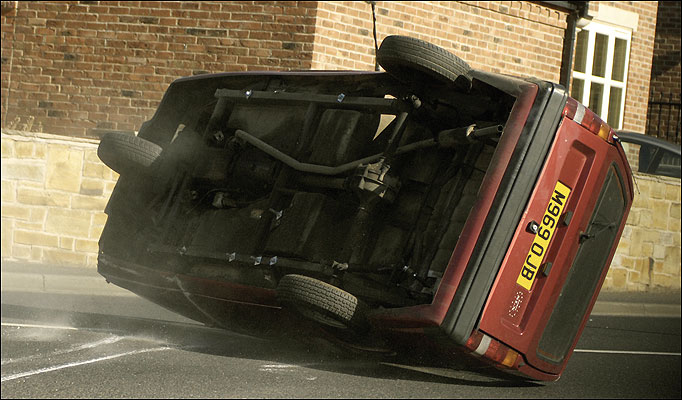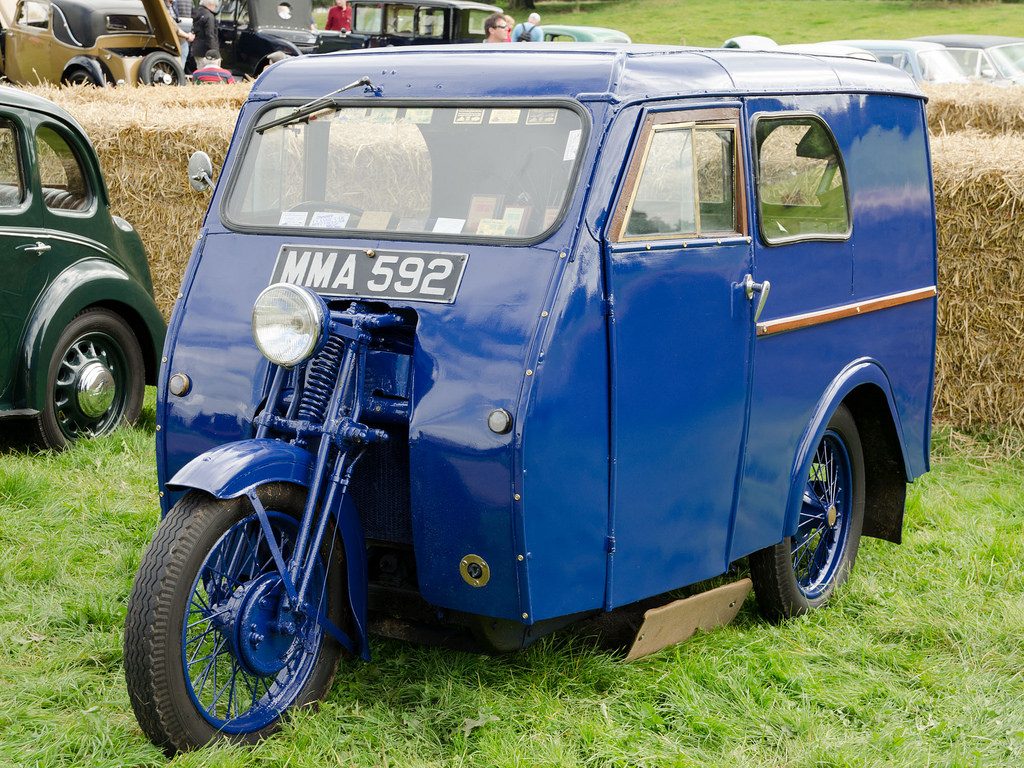To adults, Dr. Seuss’s writings and illustrations seem like strange, on-paper acid trips for young children. To be sure, his creations were pure fantasy, void of logic and reasoning – surely, no one would ever try to embody this madness in the world of car making. Wrong. Check out the Reliant Robin.
Its name even harkens to a Dr. Seuss book, but this is a real car, produced in Britain, driven on public streets. Take a moment to let the insanity soak in:

The Reliant Robin’s 3-wheel configuration is quirky, iconic, and a little unstable…
Yes, it has three wheels, one in the front, and two in the rear. But this is not a Can-Am Spyder, a cool, niche “motorcycle” thing that’s quite fun to drive. See, when you take a 3-wheeled vehicle and flip the configuration around, you get something a little too wobbly.
But for all the incredulous car design, the Reliant Robin holds some surprising titles. Obscure sources claim the Reliant Robin, by sheer sales figures, was the second-most popular fiberglass vehicle sold in history. Apparently, the Robin was the second-most owned UK-built car for a time, too. The whole thing is so fanciful we don’t bother to cite these sources, nor do we doubt them.
Speaking of sales, the Robin Mk. 1 began production in 1973, with popular design firm Ogle Design heading the program. The Mk. 1 wasn’t actually the first crazy three-wheeler. Instead, it was a replacement for the equally zany Reliant Regal, which was itself a replacement for the Reliant Regent, a three-wheeled motorbike-car-thing that looked like it belonged on the busied streets of 1980’s Bangkok.

… Unstable enough that careless drivers (like Jeremy Clarkson) could easily tip their Robin when turning
The Mk. 1 was still quite motorcycle-esque, featuring a 750cc motor later boosted to 850cc. What’s more, the Robin managed to cruise just below the licensing requirements, so B1 motorcycle licensees could drive the Robin, even without a conventional driver’s license.
After 9 years of sales, The Robin was killed off in 1982. During its tenure, it was surprisingly well received for two reasons: It was compact and lightweight, providing good fuel economy during the gas crisis, and it was quite affordable. If nothing else, the Robin provided Londoners and country folk alike with a modest, simple way to get around without investing in a full-size (and full-cost) vehicle.
That idea wasn’t good enough, so Reliant made the Mk. 2, an all-fiberglass Robin with a hatchback rear. An estate car and van joined the lineup, of course, so eccentric types with friends and deliveries could enjoy more passenger and cargo space. It was during this time the Robin departed its simple “get-around-town” ways and offered up some rather impressive features.

It’s almost impossible to imagine the Robin was an upgrade over anything, but it replaced the even stranger Reliant Regent
Available with the Mk. 2 were new, shiny 12” wheels, improved brakes stolen from the Mini, new, comfy interior treatments, an unleaded, 848cc OHV motor that puttered along like a proper economy car, and metallic paint jobs.
Incredibly, for all the advances in modern rail and public transport, the Robin continued to be produced through 2002 as the Mk. 3. The final Robin even mimicked a car in every form, boasting a computer that controlled the motor, proper incandescent front lamps from Vauxhall, and new interior panels that were fit for a new century.
Today, the Reliant Robin boasts a cult following. Numerous auto clubs across the pond tenderly care for their Robins, and many can be found for sale for amazing prices – one can find one that runs and drives for around $600 to $800 U.S. If you pick one up and have it shipped to the states, you’ll be one of just a few hundred lucky folks to own one of the dumbest, and yet strangely practical, cars ever made.
